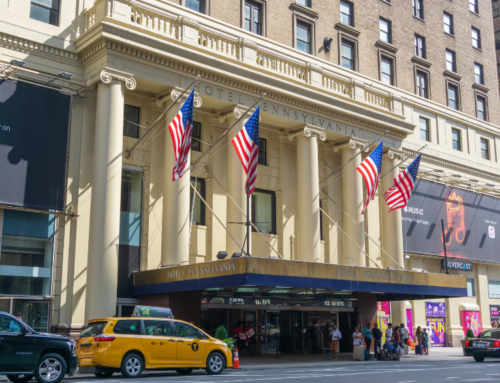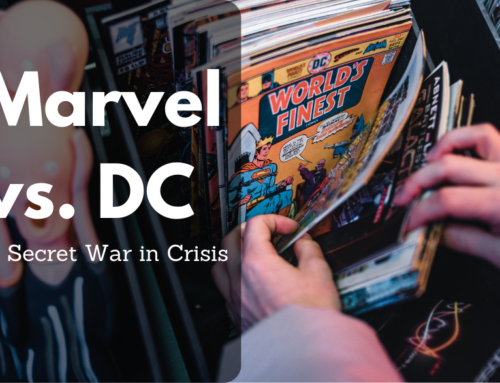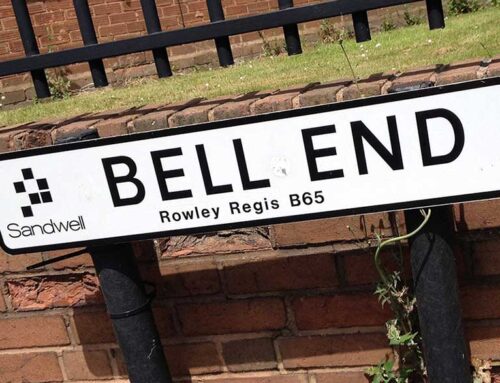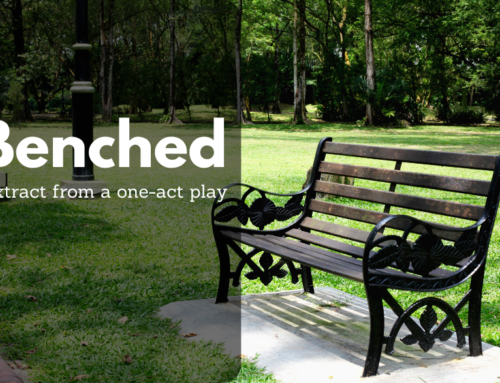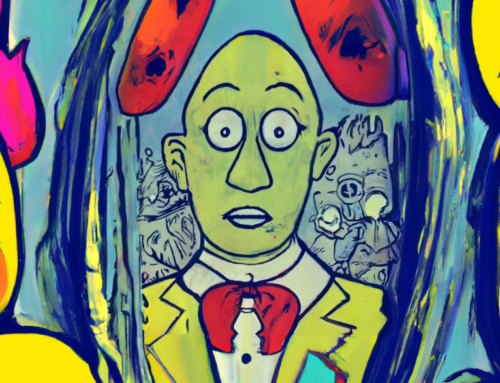The literary world has been thrown into disarray following the discovery of a hitherto unknown sequel to James Joyce’s famously impenetrable novel, Ulysses, by construction workers in Paris. Unearthed during the building of a new scenic landscape over a much-loved stretch of dual carriageway, the manuscript has struck a blow to an intellectual community still reeling from several high-profile discoveries of lost Modernist texts by Parisian construction workers.
The Ulysses sequel, Twolysses, was part of the short-lived Modernist follow-up fad of the late 1920s in which many of the writers of the period turned their masterpieces into money-spinning franchises. Examples include TS Eliot’s Power Ballad of J. Alfred Prufrock, William Faulkner’s Sound and the Fury: 2 Loud 2 Furious and Ezra Pound’s Wrath of Cantos.
Ulysses famously contained a bewildering array of high-brow literary parodies, but with Twolysses Joyce took this conceit one step further, “tearing new arseholes” out of early 21st century bestsellers that hadn’t been written yet. The book takes place exactly 10 years after the original novel and just prior to the Easter Uprising and the outbreak of the First World War (which, as historians have noted, eventually had a sequel of its own). While Ulysses is synonymous with the Irish capital, Dublin, it’s sequel took place in the UK’s second city of Birmingham thanks to a cultural regeneration scheme that offered tax breaks to artists who agreed to move to Digbeth. However, Joyce was unwilling to leave Paris on account of his fondness for mille-feuille, pain au chocolat and other French pastries, so brokered a deal with Birmingham’s civic leaders to relocate his characters instead.
The follow-up fad came to an abrupt end in 1927 during a party held at Ernest Hemmingway’s Parisian home to commemorate the removal of one of the great writer’s more troublesome wisdom teeth. Joyce, Picasso and other leading lights of the Modernist movement were in attendance when a drunken Gertrude Stein ‘gert-crashed’ the gathering and made lewd and disparaging comments about the host’s choice of hors d’oeuvres. Devastated by these comments, Joyce swiftly threw away his canapé and – later that evening – discarded Twolysses.
Like so many other abandoned Modernist sequels of this period, it was subsequently used as roadfill by the local authorities.
Plot Summary
The story begins in the early hours of 16th June 1914, when police discover a young man’s corpse with a stake through his heart on the banks of the River Liffey. Disgraced reporter Leopold Bloom arrives on the scene, much to the chagrin of the investigating Gardai. The years have not been kind to Bloom: his wife, Molly, moved to Birmingham and filed for divorce (with marriage breakdown still outlawed in Ireland, Birmingham had become a top divorce destination). Bitter and disillusioned, Bloom quit his job and launched the outspoken political magazine, Pogue Mahone (tr. ‘Pogue Mahone’). For several years Bloom’s investigative reporting ruffled the feathers of Dublin’s elite, but more recently he’d lost credibility after linking a series of unsolved vampire slayings to the mythical Irish undead chieftain, Nosfer O’Toole.
Bloom notices that the corpse’s back carries the same tattoo of a ‘paddy wagon’ that appeared on the dead vampires, and urges the officers to investigate his earlier claims. The police refuse to take Bloom’s vampire conspiracy seriously, even after the corpse bursts into flames at sunrise. They laugh scornfully at him for an entire chapter.
While walking back home along Sandymount Strand, a crestfallen Bloom finds a blood-splattered postcard written by the murder victim in his final moments, or at least before he had a chance to get a stamp. It’s addressed to his friend Stephen Dedalus – also now living in Birmingham – who Bloom hasn’t seen since the Ithaca chapter of Ulysses. Although reluctant to travel to the UK’s much-mocked second city due to his unresolved feelings for Molly, Bloom pockets the evidence and books a seat on the next ferry, determined to clear Stephen’s name and avoid Dublin during Bloomsday.
When Bloom arrives at Stephen’s home he finds a man far removed from the melancholic turn of the century hipster he fondly remembers. Stephen is now a world-famous professor of symbology who recently published a bestselling book on the hidden language of Irish republican murals entitled The De Valera Code. He lives with his beautiful lover, Ana, in Perrott’s Folly – Birmingham’s very own Martello tower that harkens back to an era when the city still had a thriving coastline. Over dinner, Ana tells Bloom that she and Stephen met following her brief stint as a minor character in an unpublished short story. Bloom, ever the investigative reporter, suspects she’s hiding something because of her strong West Midlands accent.
When Bloom tells the young couple about the tragic murder victim, Ana bursts into tears, revealing that the dead man was her brother and that both of them were vampires. This comes as a shock to Stephen, although it helps to explain his bride’s strong aversion to sunlight and fondness for blue steak. He spends several chapters coming to terms with this revelation as he neither believes nor disbelieves in the existence of vampires (he’s agnosferatu). Stephen is finally convinced once Ana reveals a large tattoo matching that of her murdered brother, then wryly muses that a world-renowned expert on hidden symbols failed to notice that his girl had a paddy wagon tattoo.
Ana explains that she was born into an eccentric community of vegan vampires who lived on the outskirts of Dudley. These so-called ‘Yampires’ had renounced their blood-sucking ways and peacefully co-existed with Dudley’s human population and neighbouring mythical beasts like West Brombies and Werewolverhamptons. This idyllic existence was shattered, however, by the arrival of O’Toole and his vicious gang, The Gobshites. These ultra-conservative puritans – appalled by this utopic vision of human-vampire coexistence – cruelly forced the Yampires to fight each other to the death in a series of elaborate, famine-themed sporting tournaments. The few that survived fled to Ireland, although Ana decided to stay in Birmingham because of various academic commitments and an acute ferry allergy.
Ana’s narrative is interrupted when the tower comes under attack by O’Toole and his Gobshites. Bloom, Stephen and Ana put up a brave fight, but are swiftly defeated by the gang due to their overwhelming numbers and superior tailoring. Ana is kidnapped.
While rifling through a captured gang member’s pockets, Bloom discovers a ticket for a Pre-Raphaelite art exhibition at the city’s Bingley Hall. At the exhibition, Stephen notices Edward Burne-Jones’ famous large-scale oil painting, A Doom Fulfilled. Through a careful reading of the painting’s intricate symbolism, Stephen is able to determine not only that O’Toole has kidnapped his lover in order to fulfil an apocalyptic prophesy, but that Ana is heavily pregnant and about to go into labour. Ironically, a Burne-Jones painting that would have revealed Ana’s exact whereabouts was on loan to the Dublin’s National Gallery (the city had offered tax breaks to paintings who agreed to move to the area).
With no other option available, Bloom is forced to turn to the one person in Birmingham who can help him: his ex-wife.
In the years following her divorce, Molly Bloom gained some notoriety when the Birmingham Post serialised her scandalous memoir, Molly Bloom’s Diary. During a signing at Hudson’s book shop, she had a chance encounter with her former lover, showbiz impresario Blazes Boylan, who had also moved to Birmingham and was now managing the Aston Hippodrome theatre. The two subsequently resume their obsessive affair, with a renewed emphasis on sadomasochistic sauciness and bad prose.
When Bloom and Stephen explain Ana’s predicament to Molly in the tea rooms of Rackhams Department Store, Molly is initially unwilling to help as she still hasn’t forgiven Dedalus for leaving the previous novel so abruptly. Nevertheless, she agrees to make enquiries after being moved by the sight of her ex-husband’s eating haddock and eggs. As a gesture of reconciliation, Bloom hands her his lucky shillelagh.
While searching for Boylan at his theatre, Molly discovers a secret passageway leading to an underground dungeon. Assuming it was a surprise birthday present from her lover, she’s astonished to discover Boylan and a heavily-sedated Ana in a makeshift maternity ward. Boylan reveals that he is, in fact, Nosfer O’Toole, and Ana’s child will be the first ever human-vampire hybrid – the prophesised ‘Boy Wizzard’ – who will annihilate humanity through the medium of glam rock music. Nosfer offers Molly the chance to rule by his side, and Molly responds by clobbering him over the head with Bloom’s shillelagh.
Molly and Ana make their dramatic escape during a preview performance of The Pirates of Penzance, with Ana giving birth to a healthy baby boy during the interval. They meet Bloom and Stephen in the foyer then flee to Dudley, with O’Toole and his Gobshites in hot pursuit. In Dudley they form an alliance with West Brombies and Werewolverhamptons, and a cataclysmic battle follows during which Bloom and Molly, now reconciled, sacrifice their lives to destroy Nosfer and save the child.
Notes
Just like in the original novel, the events of Twolysses all take place within a single day.
Related Articles:
James Joyce at Amazon
- Audible Audiobook
- James Joyce (Author) - Jim Norton (Narrator)
- English (Publication Language)
- 07/23/2008 (Publication Date) - Naxos AudioBooks (Publisher)
- James Joyce (Author)
- English (Publication Language)
- 1856 Pages - 02/28/2016 (Publication Date) - Wordsworth Editions (Publisher)
- James Joyce (Author)
- English (Publication Language)
- 736 Pages - 01/15/2010 (Publication Date) - Wordsworth Editions Ltd (Publisher)
- Joyce, James (Author)
- English (Publication Language)
- 368 Pages - 06/01/1993 (Publication Date) - Penguin Classics (Publisher)
- Amazon Kindle Edition
- Joyce, James (Author)
- English (Publication Language)
- 5992 Pages - 04/18/2024 (Publication Date) - Pandora's Box (Publisher)
- Joyce, James (Author)
- English (Publication Language)
- 384 Pages - 03/25/2003 (Publication Date) - Penguin Classics (Publisher)
- Used Book in Good Condition
- James Joyce (Author)
- English (Publication Language)
- 656 Pages - 01/18/2012 (Publication Date) - Wordsworth (Publisher)
- Audible Audiobook
- James Joyce (Author) - Barry McGovern, Marcella Riordan (Narrators)
- English (Publication Language)
- 06/16/2021 (Publication Date) - Naxos AudioBooks (Publisher)
- Joyce, James (Author)
- English (Publication Language)
- 790 Pages - 08/29/2021 (Publication Date) - Independently published (Publisher)
- Joyce, James (Author)
- English (Publication Language)
- 336 Pages - 05/27/2014 (Publication Date) - Penguin Classics (Publisher)
Last update on 2024-04-11 / Affiliate links / Images from Amazon Product Advertising API











